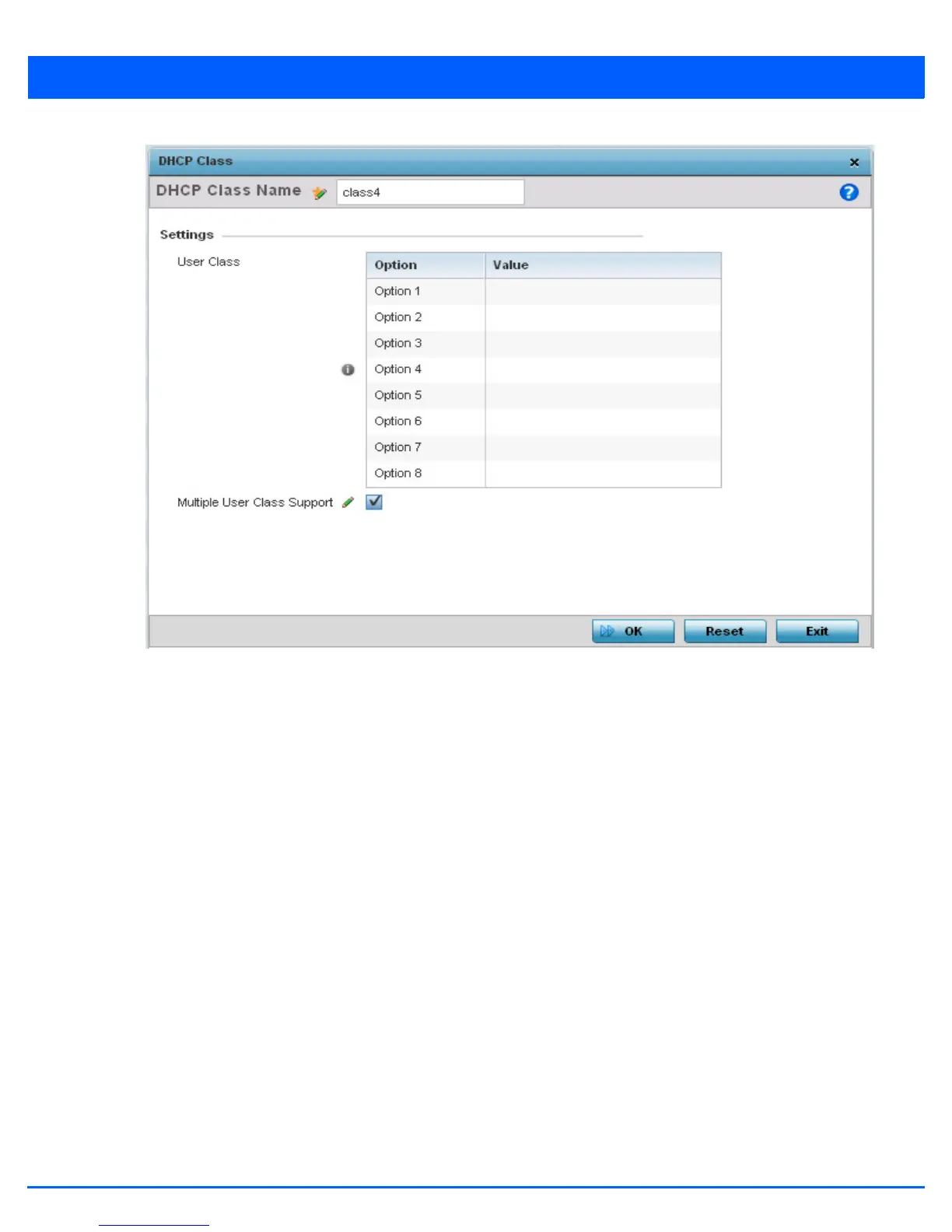9 - 26 WiNG 5.6 Access Point System Reference Guide
Figure 9-15 DHCP Class - Name Add screen
3. If adding a new DHCP Class Name, assign a name representative of the device class supported. The DHCP user class
name should not exceed 32 characters.
4. Select a row within the Value column to enter a 32 character maximum value string.
5. Select the Multiple User Class radio button to enable multiple option values for the user class. This allows the user class
to transmit multiple option values to DHCP servers supporting multiple user class options.
6. Select OK to save the updates to this DHCP class policy. Select Reset to revert to the last saved configuration.
9.3.4 DHCP Deployment Considerations
Before defining an internal DHCP server configuration, refer to the following deployment guidelines to ensure the configuration
is optimally effective:
• Motorola Solutions DHCP option 189 is required when AP650 access points are deployed over a layer 3 network and require
layer 3 adoption. DHCP services are not required for AP650 access points connected to a VLAN that’s local to the controller
or service platform.
• DHCP’s lack of an authentication mechanism means a DHCP server cannot check if a client or user is authorized to use a
given user class. This introduces a vulnerability when using user class options. For example, if a user class is used to assign
a special parameter (for example, a database server), there is no way to authenticate a client and it’s impossible to check
if a client is authorized to use this parameter.
7. Ensure traffic can pass on UDP ports 67 and 68 for clients receiving DHCP information.

